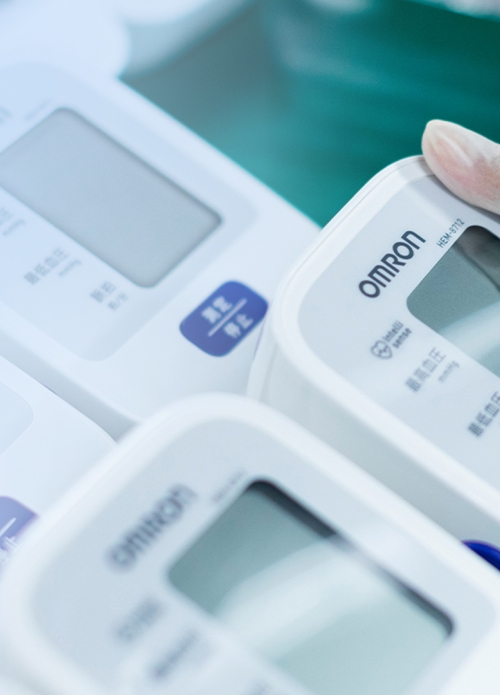Blog – Pain Management
Pain Relief with TENS
10 non-invasive ways to relieve pain using TENS machine
(published: 20 October, 2020)

Blog – Pain Management
Pain Relief with TENS
10 non-invasive ways to relieve pain using TENS machine
(published: 20 October, 2020)
10 Non Invasive Ways to Relieve Pain Using TENS machine
In case people experience pain for weeks or even months, non-invasive methods should be applied.
Pain has various underlying causes and depending on what your body is experiencing, you may experience different types of pain. Fortunately, pain can be managed with medicine, a balm, or using a pain-relieving method like a massage or cold packs.
Most of the time, pain is relieved as soon as its cause is fixed, but for some people, it lingers for weeks and months, interfering with their quality of life. This is where non-invasive pain management methods come in. These methods relieve the pain without the need to swallow medicine or have surgery. Various non-invasive methods work effectively on different types of pain. Let's discuss different types of pains and their non-invasive pain management methods.
Main Types Of Pain
Unknown to ordinary people, there are different kinds of pain that may not be distinguishable by sensation alone. Some of the types of pain are:
Nociceptive Pain – This term is used to define pains that are caused by physical damage. Some of the examples of nociceptive pain are arthritis, dental procedure, and sports injury.
Inflammatory Pain – Inflammatory pain is caused by tissue damage and inflammation. It is the spontaneous hypersensitivity experienced at the site of injury.
Neuropathic Pain – Neuropathic pain is caused by damage or a disease affecting the somatosensory nervous system. It is associated with abnormal sensations and may be continuous or episodic.
Functional Pain – Functional pain is a pain that does not come from an obvious organic origin. This type of pain is diagnosed based on the predominant symptoms.
Somatic Vs. Visceral Pain
Somatic pain and visceral pain are two different types of pain. Somatic pain is attributed to be coming from skin, muscles, and soft tissues, while the visceral pain comes from the internal organs.
Somatic pain management includes self-care, exercise, along with over-the-counter pain medication. Visceral pain is managed symptomatically with the help of analgesics, spasmolytics, and antidepressants. In some cases, doctors may use invasive therapy like nerve blocks, neuro-stimulation, pulsed radio-frequency ablation, etc.
Common Types Of Pain
• Acute Pain – It is the kind of pain that comes suddenly and is caused by something specific that is wrong. It doesn't exist without underlying cause and doesn't last longer than six months.
• Chronic Pain – Chronic pain is usually associated with long-term illnesses like Osteoarthritis. It lasts longer than acute pain and is often treated with a combination of oral and topical medicines along with therapy.
• Breakthrough Pain – This type of pain is experienced in between doses of pain medication. It can be spontaneous and gets better on its own or with the next dose of medicine.
• Bone Pain – Bone is a deep pain that is commonly caused by the injury. It may be intense or dull and is often treated with pain killers and by treating the root cause.
• Soft Tissue Pain – Soft tissue pain is the discomfort around bones and muscles. Sometimes it may also be caused by injuries in tendons, ligaments, and other supporting structures of the body. Soft tissue pain can be treated with medicine and, in some cases, natural therapies.
• Nerve Pain – Nerve pain is caused by nerve damage, which can have various reasons. It feels different compared to other pain and can present itself as tickling, burning, etc. It is treated using medicines.
• Referred Pain – This is a radiating pain that is felt away from the site of injury. Referred pain is caused by a disturbance in the nerves, which are all interconnected in our bodies. It is treated by treating the origin.
• Phantom Pain – Phantom pain is felt in an amputated body part. Experts have found that the pain is connected to the spinal cord and brain and is not a psychological problem, as believed initially. Phantom pain is treated using medicine like ibuprofen, antidepressants, narcotics, etc.
What Is Pain Management?
Several methods exist for those types of pain that cannot be cured, but managed for temporary relief.
Pain can be of different types depending on the root cause. While some type of pains can be treated/cured, there are a few that can only be managed, meaning the patient can get only temporary relief from them. Various methods used in pain management include:
Therapeutic Touch
Therapeutic touch is believed to help with the self-healing properties of the body. Several studies have shown that this method can help reduce pain through energy-based methods.
Acupuncture
Acupuncture is believed to be effective in pain management through the release of endorphins. In this process, acupoints are stimulated to send a message to the central nervous system. The endorphins, released in the process, tend to block the pain messages. It can be used in the treatment of menstrual cramps, carpal tunnel syndrome, tennis elbow, low back pain, and headache.
Chiropractic Treatment And Massage
This is the most common non-invasive treatment for issues like chronic back pain. The Chiropractic pain management method has proven its effectiveness in several clinical trials. Several studies are being conducted to establish its efficacy in managing pain related to other problems.
Nutritional Supplements
Nutritional supplements like SAMe and fish oils have shown pain-relieving capabilities. More research is being conducted to establish its efficacy.
Herbal Remedies
Several herbal remedies can help with pain management. Some herbs that have evidence supporting their effectiveness are cat's claw, turmeric, ginger, and white willow bark.
Mind-Body Therapies
Mind-body therapies are methods in which the mind is used to manage the functions and symptoms of the body. Some of the most popular mind-body therapies are meditation, relaxation techniques, biofeedback, guided imagery, and hypnosis.
Exercise
Regular exercise is known to provide long term pain relief by improving muscle tone, strength, and flexibility. Further, exercise also results in the release of endorphins, which are natural pain killers produced by the body. Some of the common forms of exercise used to relieve pain are yoga, walking, biking, and swimming.
TENS
TENS stands for Transcutaneous Electrical Nerve Stimulation therapy. This method uses electrical stimulation to diminish pain. TENS works by scrambling the pain signals and is used to mask pain related to health issues like diabetic neuropathy.
Physical Therapy
Physical therapy can relieve pain and improve movement and function impaired by an injury. This therapy involves stretching, strengthening, and other techniques.
Bioelectric Therapy
Bioelectric therapy works by blocking pain messages to the brain. It is used to treat many chronic and acute conditions like back pain, headaches, diabetic nephropathy, arthritis, and scleroderma. Bio-electric therapy has been found to be effective in temporary pain management. It can reduce the need for pain relievers by as much as 50%.
TENS Machine – Types Of Pain It Can Manage
A TENS machine can help with pain caused by:
• Arthritis
• Diabetes nerve damage
• Facial pain
• Fibromyalgia
• Menstrual pain
• Surgery pain
• Facial pain
• Spinal cord injury pain
• Labour pain
• Back pain








